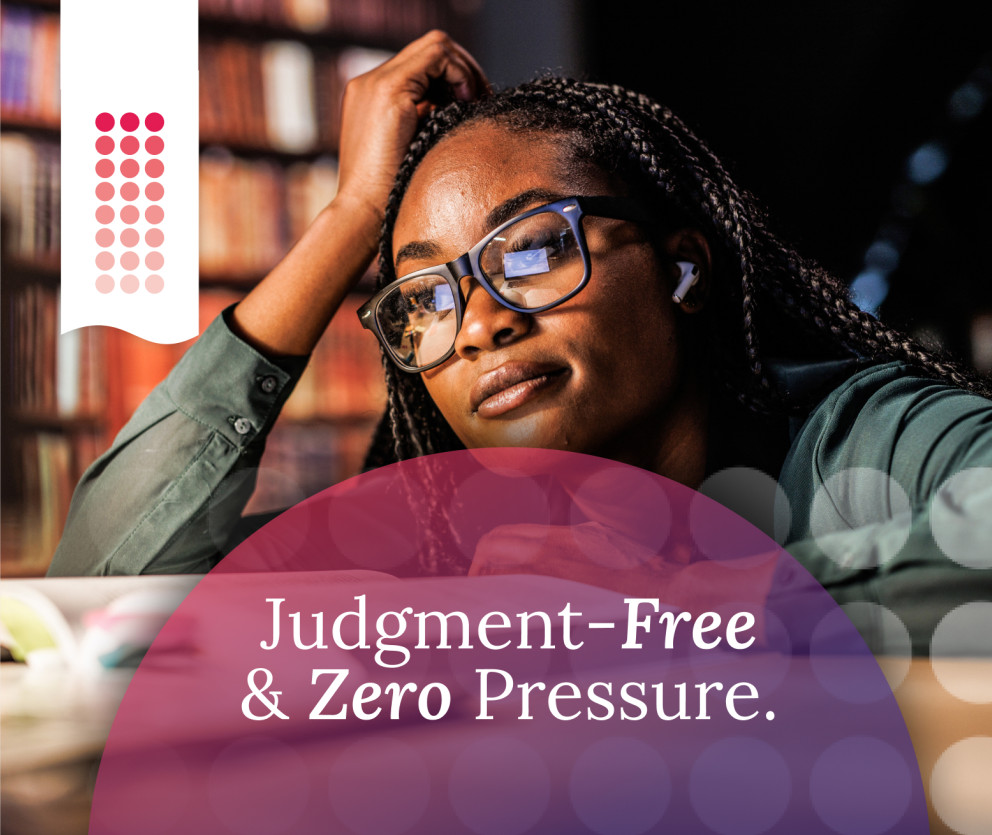Personal Bankruptcy: Exemptions
Learn who qualifies for bankruptcy.
Want to Skip the Info?
We’ve got you covered:

Who Can File for Bankruptcy in Canada?
To be eligible to file bankruptcy, you must:
- Owe at least $1,000 in unsecured debt
- Be unable to pay your debts as they come due
- Live in, do business in, or own property in Canada
That’s it. There’s no income threshold or required minimum payments to start — just a need for a fresh financial start. If you’re not sure whether you qualify, a Licensed Insolvency Trustee (LIT) can help assess your situation confidentially and without judgment.

Find Out How Much You Can Save With a Consumer Proposal!
Try our easy-to-use calculator and learn how much a consumer proposal could cut down your debt.
Compare Options
Bankruptcy vs Other Debt Options
Filing for bankruptcy is one of several debt solutions available — but it’s the only one that guarantees full legal protection and a full discharge from most debts. If you have no realistic path to repay what you owe, bankruptcy may offer the quickest, cleanest route forward.
non-exempt assets
What Can You Keep in a Bankruptcy?
These are the assets you are able to keep while filing for bankruptcy:
Your Home
But only if it has equity of less than $10,000
Household Goods
You’ll keep basic furniture, clothing, and personal items and tools in your home
Vehicle
One vehicle up to a set value (varies by province)
Equipment Required by Your Employment
Any tools you must use for your job
Some Income Benefits
Certain government benefits and income support may be protected
Government Savings Accounts
Any RRSP, RRIF, RESP, and DPSP savings (except any made in the year prior to filing bankruptcy)
Remember: Bankruptcy isn’t the end of the road.
Contrary to popular belief, bankruptcy does not mean giving up everything you own. In fact, as you can tell, the law protects many essential assets so you can maintain a basic standard of living while starting over.
Note: These exemptions can vary by province or territory, so it’s important to speak with a Licensed Insolvency Trustee to understand exactly what applies to your case.
Book a free consultation with Spergel today, and we will calculate a payment plan for you to get started.

How Are Bankruptcy Payments Determined?
Your Licensed Insolvency Trustee will assess your income, family situation, and allowable expenses.
If you earn above a certain government-set threshold, you may be required to make additional “surplus income” payments during your bankruptcy — but all of this will be explained clearly before you file.

Fees
What Does Bankruptcy Cost?
Many people might be surprised to learn there is an obligatory cost associated with filing bankruptcy in Canada. At Spergel, there are no hidden fees — we walk you through everything before any decision is made.
next steps
How Do I Get Started?
It all starts with a conversation.
Licensed Insolvency Trustees (LITs) are the only professionals in Canada legally authorized to file for personal bankruptcy. At Spergel, we make it simple, supportive, and judgment-free. Here’s what we offer:
- Free consultations — no pressure, no commitment
- A clear explanation of your options
- A customized plan based on your needs
- Ongoing support from your dedicated LIT — not a call centre
Everyone’s Situation is Different. Let’s Talk About You.
Book a free consultation with Spergel. We’ll walk through your situation and build a plan that gives you the relief you deserve.

Payment Structure
How Does a Licensed Insolvency Trustee Get Paid?
You may wonder whether filing bankruptcy means large fees or hidden costs — it doesn’t. At Spergel, we’ll explain exactly what you’re paying for, and why. Here’s a breakdown of the typical cost of filing bankruptcy in Canada:
This covers the administration of your bankruptcy and the support you receive from your Licensed Insolvency Trustee. For most first-time bankruptcies, this is $1,800, typically paid in $200 monthly installments over 9 months. In some cases, this base cost may be higher depending on the complexity of your situation.
Surplus Income (If Applicable)
If your income is above a government-set threshold (based on household size), you may be required to make surplus income payments. This ensures the process is fair and income-based. If this applies to you, we’ll explain it clearly — and help you budget for it.
Some of your assets may need to be sold or reassigned to help repay part of your debt. The value of non-exempt assets (things not protected under law) is factored into your overall cost. If you have valuable assets, your trustee may explore alternative options like a consumer proposal instead.
There’s no one-size-fits-all solution when it comes to debt. Whether or not bankruptcy is right for you depends on your income, your assets, and what kind of relief you’re looking for. That’s why our Licensed Insolvency Trustees take the time to get to know your situation and walk you through every option — with understanding, transparency, and zero pressure.
Book a free consultation with Spergel today, and we’ll help you understand what filing bankruptcy would look like, including cost, timelines, and what you can keep.
Real Canadians. Real Success — Like David
“Spergel has been a true lifesaver for me. Facing overwhelming debts and a very challenging time in my life in general, they expertly navigated me through the bankruptcy process with compassion and efficiency. Their hands-on approach made the process seamless. Now, I’m on the road to financial recovery, free from the burdens of the past. Thank you, Spergel, for providing the support I needed for a fresh start.”
– David, Ontario


David’s Story is just one of many
David’s story is just one example of how bankruptcy, when guided by the right support, can offer real hope and lasting relief. Whether you’re dealing with personal loans, tax debt, or creditor pressure, bankruptcy can be a lifeline. Explore more Success Stories from Canadians we’ve helped — or reach out so we can help you, too.
Real Stories from People Just Like You
See how Canadians are regaining control through bankruptcy — and building brighter financial futures.
Is Bankruptcy the Right Option for You?
Let’s chat about your financial goals and explore whether bankruptcy is the right fit.
Quick Contact Form
"*" indicates required fields
Book a Specific Date/Time
Call Us During Business Hours
When you call, you will be connected with one of our Licensed Insolvency Trustees (LITs) during our regular business hours.
Toll Free: 1-877-557-7367
Monday to Friday 8am – 7pm EST
Saturday 9am – 4pm EST
Sunday 10am – 5pm EST
You can also reach us at one of our office locations phone numbers. See our list below on this page.
Mobile Text Us During Business Hours
From your phone, you will be connected with one of our Licensed Insolvency Trustees (LITs) during our regular business hours.
Monday to Friday 8am – 7pm EST
Saturday 9am – 4pm EST
Sunday 10am – 5pm EST
Not during office hours? Use our Chat on this page 24/7 and get connected for answers and live chat later.
Email Us
Sometimes a simple email is the way to get things rolling.
Expect a reply from us during our business hours:
Monday to Friday 8am – 7pm EST
Saturday 9am – 4pm EST
Sunday 10am – 5pm EST
Click the button below to reach or use our email address:
hello@spergel.ca

Let’s Find What Works for You
Busy Schedule? Book a Date/Time:
Prefer to Call? Reach Us Here (Toll Free):
Find a Spergel Office Near You
Use the map to find a Spergel office near you and connect with a Licensed Insolvency Trustee.